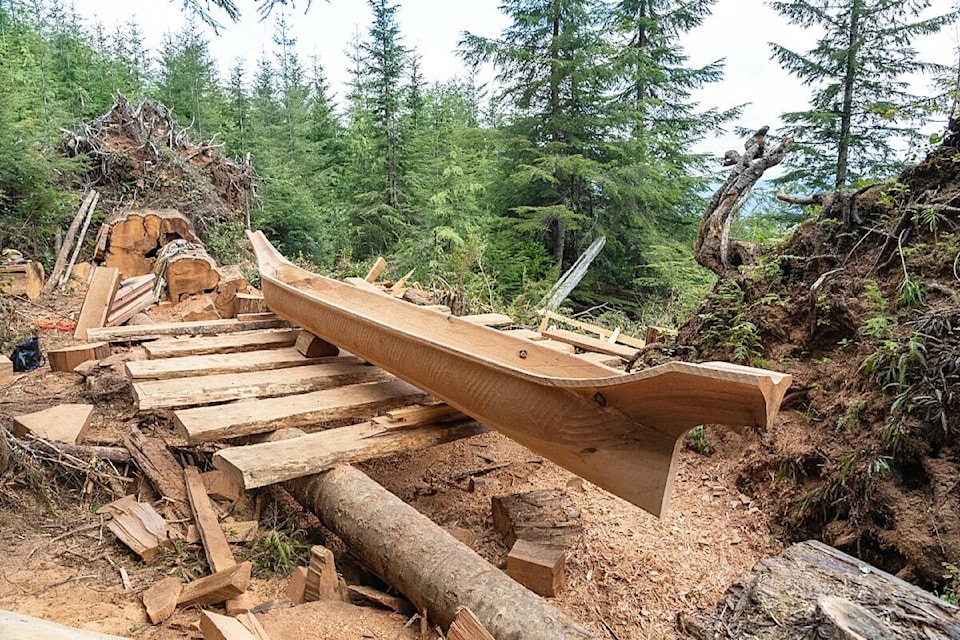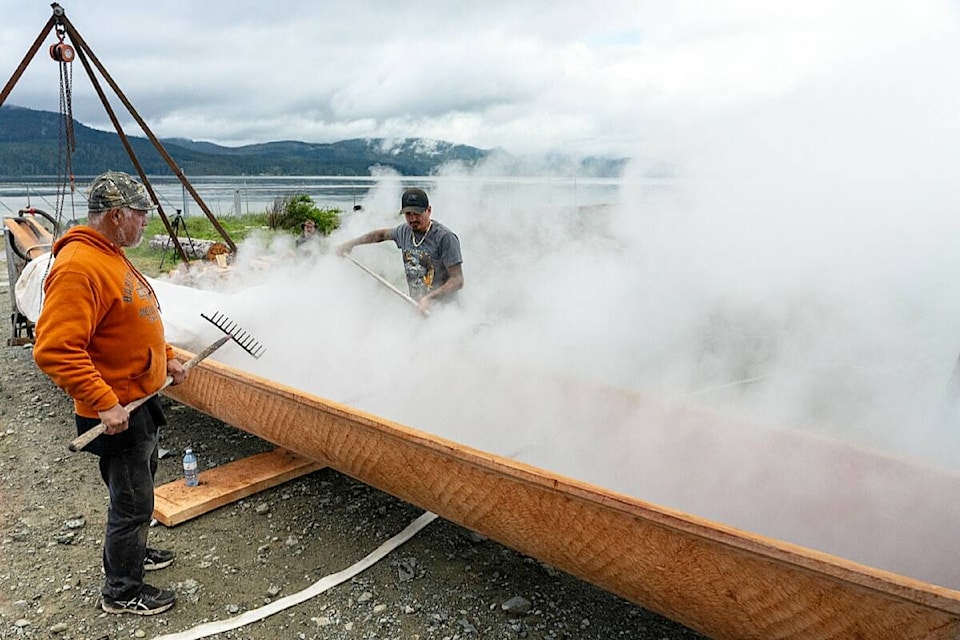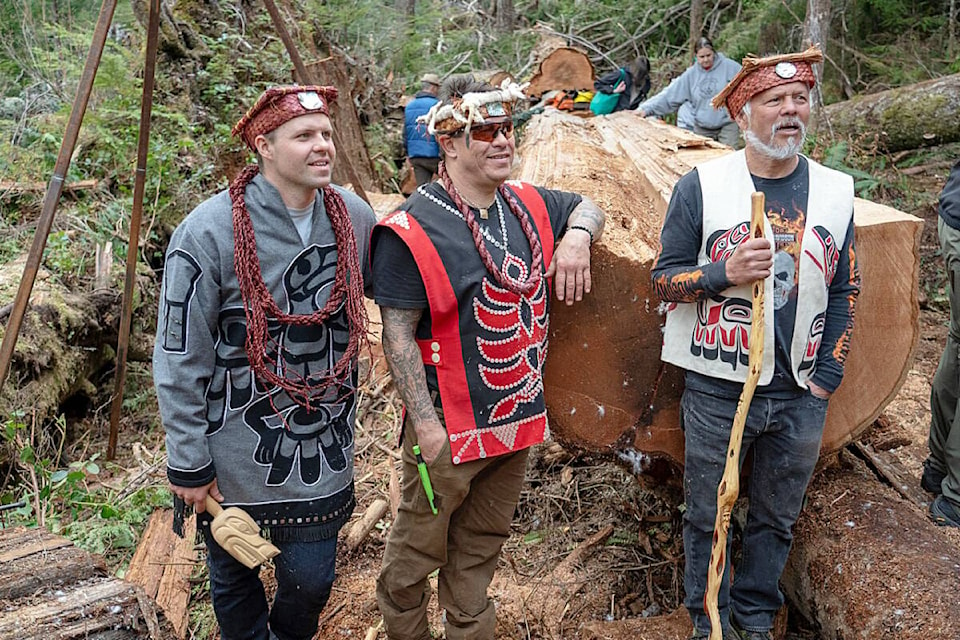For four months, high up in the H’kusam Forest near Sayward on northern Vancouver Island, three master carvers from three Nations have been working together to create a xwax’wana, a traditional canoe, using traditional methods.
A windfall cedar tree located deep in the woods has been subjected to the skilled hands of Max Chickite from the We Wai Kai Nation, Junior Henderson from the Wei Wai Kum and Karver Everson from the K’omoks in a project aimed at revitalizing the ancestral practice of xwax’wana (canoe) carving. This Indigenous-led project is bringing together not only the carvers from the three Nations but knowledge keepers, elders, youth and Indigenous Guardians to help decolonize canoe carving and support connection to lands and waters, community well-being and cultural strength.

The carved canoe, which is approximately 10 metres long, was moved by the carvers and community members from all of the Nations from its location in H’kusam Forest to the Kelsey Bay Spit in Sayward on May 20, where it was steamed in the traditional way. It was then painted and made ready for blessing, naming and launching in a formal ceremony.
The name ����̱������̱����̱���� signifies travelling in a boat together. ����̱������̱����̱���� will be paddled to Cape Mudge on Quadra Island on July 17 where it will be formally welcomed by the three First Nations communities that evening.
“The We Wai Kai First Nation is delighted to welcome the carvers, the paddlers, our communities and our fellow Nations to Cape Mudge to witness together the arrival of ����̱������̱����̱����. Our forests, our large cultural cedar trees and our traditional use of those trees remain as important to us as they have been since time immemorial. The xwax’wana and the process to create it will be both a living legacy and a contemporary reminder of that for our people as we steward our territories now and into the future,” said Chief Ronnie Chickite, We Wai Kai First Nation.

The project is supported by the Nanwakolas Council which is composed of six member First Nations whose traditional territories are located in the Northern Vancouver Island and adjacent South Central Coast areas of British Columbia (Mamalilikulla, Tlowitsis, Da’naxda’xw Awaetlala, We Wai Kai, Wei Wai Kum and K’ómoks).
“The significance of ����̱������̱����̱���� is immense. The journey today, in which paddlers from all three Nations have worked to bring the canoe from Kelsey Bay to Cape Mudge, is symbolic of the journey each of the Nations are taking toward a better future for their communities and for the territories. The Nations are all well on the way on their journey to reclaim self-determination and take back their rightful place as stewards of their lands, waters, and resources. Gilakas’la to everyone involved in this historic event,” said Dallas Smith, President, Nanwakolas Council.
[gps-image name="36919857_web1_painting.jpg"]
Plan your adventures throughout the West Coast at and follow us on and @thewestcoasttraveller. And for the top West Coast Travel stories of the week delivered right to your inbox, sign up for our weekly !



